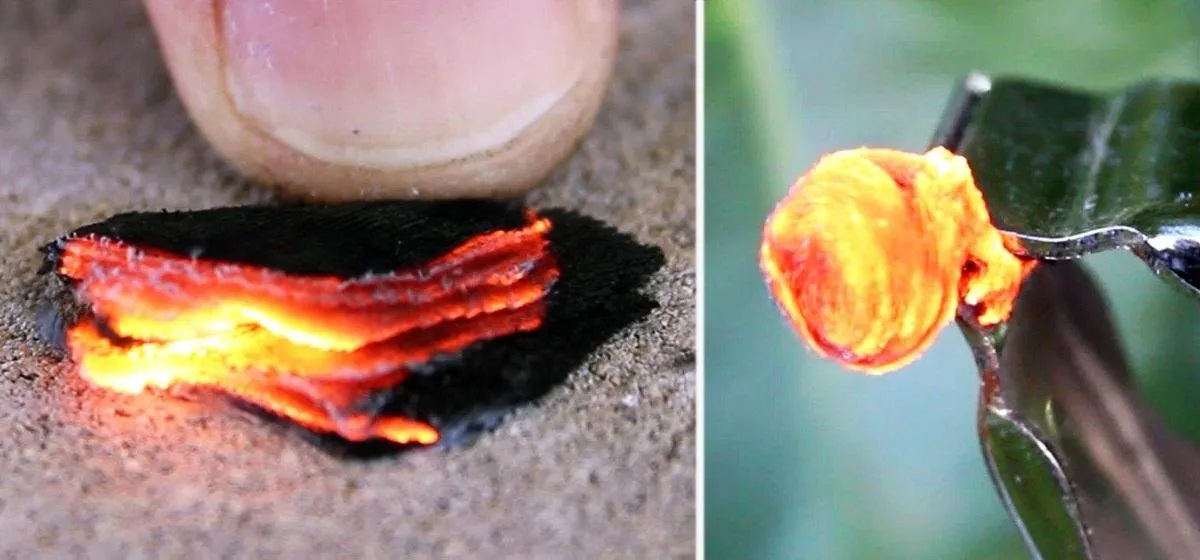For this project, I sacrificed some of my kids' clothes and a can of tuna to make some high-quality fire starter! Here's how to make a great batch of char cloth to add to your emergency survival kit.
WARNING: This project should not be attempted without adult supervision and adequate training. Misuse, or careless use of fire and flammable materials may result in serious injury, property damage, and/or death. Use of this video content is at your own risk.
What Is Char Cloth?
Char cloth is a fire-starting tinder that has the ability to capture and hold a spark amazingly well, and for a considerable amount of time.

According to Wikipedia:




I use it as my tinder of choice for my acrylic fire piston.

And it's not that hard to make.
Materials You'll Need
This project can be done with items you probably already have around the house! You'll need a tuna can, a "lid-lifter" style can opener, cotton fabric, and a nail, awl, or small screwdriver.






For cotton fabric, old T-shirts work very well if they're 100% cotton. You can find this information on the tag inside the shirt. I also found that cotton balls work extremely well, and have become my new favorite!
Cook the Cotton
To make the char cloth cooker, just follow these quick steps.
- If possible, use a "lid-lifter" style can-opener to open the can. This cuts the top off along the side of the can.




- Clean out your tuna can and make sure it's dry and free of contaminants.

- Place 4-8 cotton balls inside the can (or about 4 round pieces of cotton fabric from your T-shirt).

- Replace the lid and press it back into place. (Note: If you cut it with a "lid-lifter" style can opener it should press and hold together like it was meant to be!)
- Flip the can over, and use your punch to make a small hole in the "top" of the cooker.




Your cooker is complete and ready to go!
Fire It Up!
The goal is to heat the container up over 400°C, and this can be done in a variety of ways. For example:
- Use solar power via your Solar Scorcher from another project.

- Place directly in an open flame.

- Any other outdoor method of inducing heat. (Outdoors because potentially harmful gasses will be released and can smell up your house.)
When the container gets hot enough, the cotton releases gasses, including hydrogen and methane gases. As these gasses are cooked out, the fiber becomes carbonized through a process called "pyrolysis". This means that the fiber is charred, but not burned.




You can tell the process is working because you'll see the gas venting through the hole in the top of the container. These gasses are flammable, and may ignite. Don't worry if they do because that's normal and just fine.
The cooking is done when the gas stops and the flame goes out.
Note: I've found that cooking them beyond the point where the gasses stop, and flame goes out, can negatively effect their performance, so take the container off the fire as soon as practical.
Next...
- Place a layer of aluminum foil over the hole to prevent air from sucking back into the container.

- Let cool for about 5 minutes.
Note: The container is very hot, so use protection on your hands to avoid being burned while applying the foil.
How Did It Turn Out?
When the container has cooled off completely, open it up and the first thing you'll hopefully see is that your white cotton fabric (or cotton balls) have turned completely black.






Note: If there are parts that are still white, or brown, it's not cooked completely and needed more time on the fire.
To test your batch of char-cloth, brush gently with an open flame. The cloth should capture the heat and form a small spark that will continue to smolder for an impressive amount of time. One cotton ball can last a couple of minutes.

By blowing air onto the spark, heat will transfer quickly and can engulf the entire cloth.

This is the great advantage of the cloth. It can deliver a lot of heat when you need it (by blowing on it), or just hold a spark for a couple of minutes while you're getting your tinder bundle ready.

Well there's how to make a batch of char-cloth using materials from around the house. It's great for emergencies, so go make a batch for your emergency kit right now!
Haven't see the video yet? You can still see it here! And if you like this project, perhaps you'll like some of my others. Check them out at thekingofrandom.com.


Comments
No Comments Exist
Be the first, drop a comment!